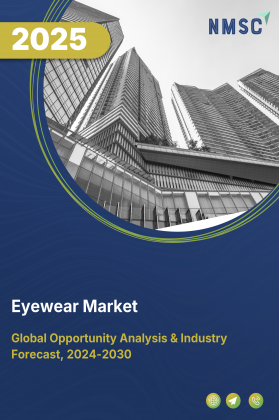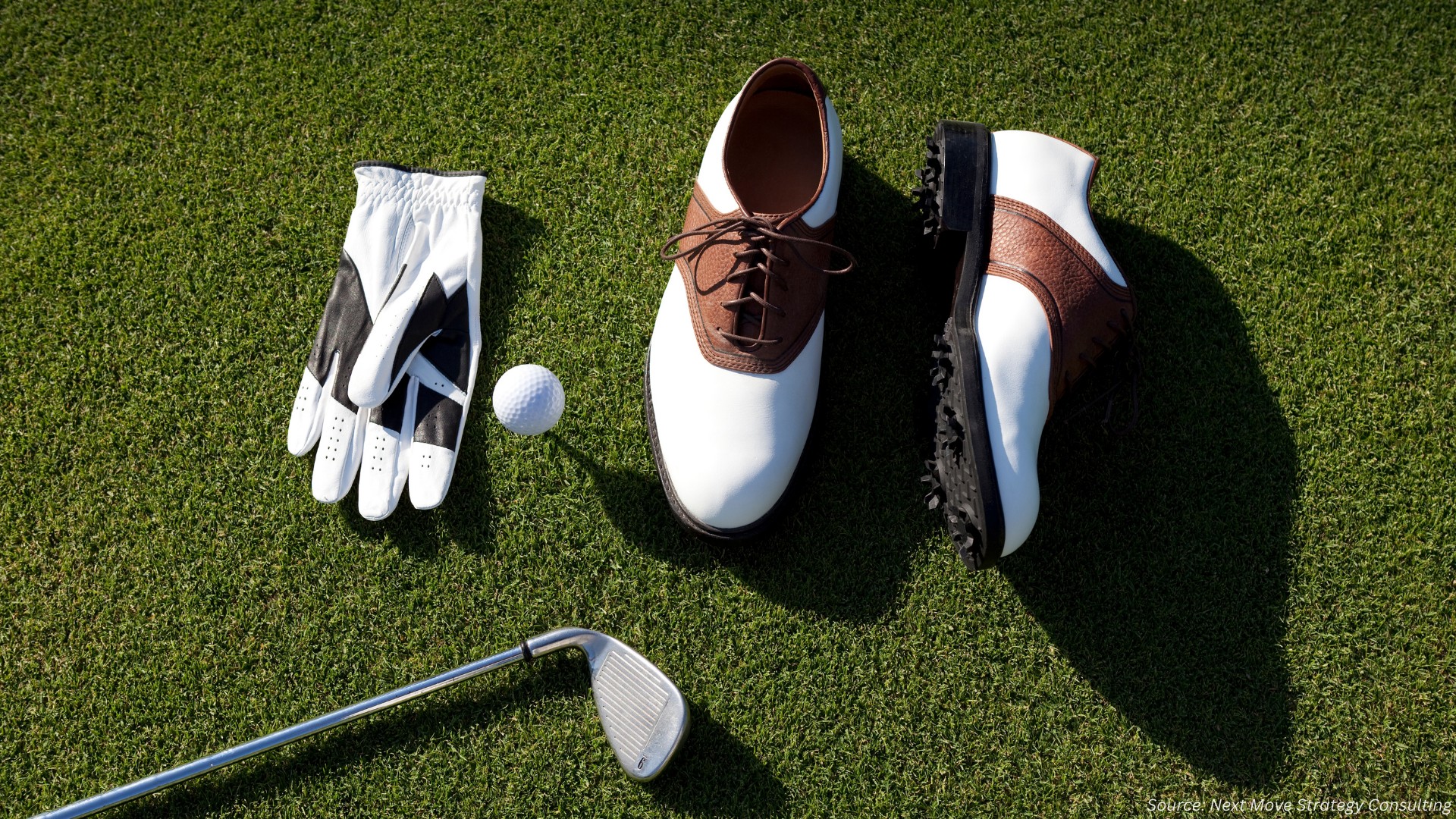
Eyewear Market by Product Type (Prescription Eyeglasses, Sunglasses, Contact Lenses, Specialty Eyewear, Others), by Material (Metal Eyewear, Plastic Eyewear, Others), by Price (Affordable, Premium, Luxury), by Distribution Channel (Clinics & Hospitals, Modern Trade, Multi-brand Stores, Optical Stores, Online Retailing, Others), and by End User (Children, Teens & Young Adults, Adults, Seniors) – Global Opportunity Analysis and Industry Forecast, 2025–2030
Industry Overview
The global Eyewear Market size was valued at USD 199.12 billion in 2024, with an estimation of USD 215.45 billion in 2025 and is predicted to reach USD 319.51 billion by 2030 with a CAGR of 8.2% from 2025-2030. The market is witnessing robust growth driven by the rising prevalence of vision disorders such as myopia, particularly among younger populations, due to lifestyle changes like increased screen time and reduced outdoor activity.
Expanding e-commerce and digital retail, featuring AI-powered try-ons and online eye tests, have improved accessibility and convenience, while eyewear’s evolution into a fashion and lifestyle accessory is boosting repeat purchases and higher spending.
However, the high cost of premium eyewear continues to limit adoption in price-sensitive regions. Looking ahead, smart eyewear integrating AR, audio, and fitness tracking presents a significant opportunity, transforming glasses from basic vision aids into multifunctional, connected lifestyle devices.
Rising Prevalence of Vision Disorders Boost the Market Growth
The eyewear market demand is experiencing strong momentum due to the rising incidence of vision disorders, particularly myopia, among younger populations. Over one-third of children and teenagers globally are affected by myopia, a significant jump that reflects lifestyle changes such as increased screen time, reduced outdoor activity, and academic pressure. This early onset of refractive errors is prompting parents and healthcare providers to seek timely vision correction solutions, driving demand for prescription glasses and contact lenses.
Moreover, the growing awareness around eye health and regular vision screening is accelerating product adoption. As myopia becomes more common at a younger age, many consumers are expected to rely on corrective eyewear for a longer duration, supporting steady, long-term growth in the global industry.
Growth of E-Commerce and Digital Retail Drives the Market Growth
E-commerce has transformed the industry by offering consumers easy access to a wide range of frames and lenses online. Features like AI-powered virtual try-ons and online eye tests have made shopping more convenient and personalized. Direct-to-consumer brands such as Warby Parker, Lenskart, and Eyebuydirect have leveraged this trend with affordable pricing, home trials, and flexible return policies. This shift has expanded access to quality eyewear, especially in regions lacking physical optical stores, and continues to drive strong market growth.
Eyewear as a Fashion and Lifestyle Statement Drives Repeat Purchases and Higher Spending
Eyewear has transformed from a purely functional product into a key fashion and lifestyle accessory. Today’s consumers, particularly millennials and Gen Z, view glasses and sunglasses as extensions of their personal style, purchasing multiple pairs to match different outfits or occasions. This shift has been driven by designer collaborations, influencer marketing, and the rise of customizable, trend-driven frames.
Fashion-forward brands and celebrity endorsements have elevated eyewear into the mainstream fashion space, encouraging repeat purchases and increasing average spending, making style a major growth driver for the global market.
High Cost of Premium Eyewear Products Restrain the Market Growth
While demand for fashionable and high-quality eyewear is rising, the high cost of premium products remains a barrier for many consumers especially in low- and middle-income regions. Branded frames, designer collaborations, and advanced lenses are priced well beyond the reach of average buyers.
In countries without widespread insurance coverage for vision care, out-of-pocket expenses limits access, particularly for prescription eyewear. This price sensitivity slows market penetration in underserved regions, despite rising awareness and demand.
Rise of Smart Eyewear Present Future Opportunity
Smart eyewear is emerging as a key future growth avenue in the market. Blending functionality with innovation, smart glasses now offer features like audio integration, fitness tracking, hands-free calls, and even augmented reality, all embedded within fashionable frames.
Tech giants such as Meta Google, and Huawei are actively investing in this space to create connected eyewear that appeals to both lifestyle and tech-focused consumers. As these devices become more compact, affordable, and stylish, smart eyewear is expected to transform how people use glasses, shifting them from simple vision aids to multifunctional, everyday wearables.
Market Segmentations and Scope of the Study
The eyewear market report is segmented by product type, material, price, distribution channel, end user, and regions. Product types include prescription eyeglasses, sunglasses, contact lenses (premium and mass), specialty eyewear, and other variants. Materials cover metal eyewear, plastic eyewear. Price categories comprise affordable, premium, and luxury segments. Distribution channels include clinics and hospitals, modern trade, multi-brand stores, optical stores, online retailing, and others. End users span children, teens and young adults, adults, and seniors. The market spans North America, Europe, Asia-Pacific, and the Rest of the World.
Geographical Analysis
North America holds a significant eyewear market share, driven by high disposable income, strong awareness of vision health, and a growing aging population. The U.S. leads the region with advanced eye care infrastructure, a high prevalence of vision correction needs, and strong demand for premium and designer eyewear. E-commerce growth, along with early adoption of blue light-blocking and smart glasses, continues to support market expansion.
Europe is a mature and fashion-driven market, with countries like Germany, France, Italy, and the UK at the forefront. Strong demand for both prescription eyewear and high-end sunglasses, coupled with strict eye health regulations, supports steady market growth. The region’s deep-rooted fashion culture also fuels the popularity of designer and customizable frames. Sustainability trends and rising demand for eco-friendly materials are gaining traction among European consumers.
APAC is the fastest-growing region in the market, propelled by a large population base, rising cases of myopia (especially in children), and growing middle-class income. Countries like China, India, South Korea, and Japan are witnessing rapid urbanization and screen exposure, contributing to high demand for both prescription glasses and protective eyewear. Expanding e-commerce penetration and affordable product ranges are making eyewear more accessible across urban and rural markets.
The market in the Rest of the World (RoW) region, which includes Latin America, the Middle East, and Africa is steadily expanding due to improving healthcare access, growing awareness of eye health, and rising use of digital devices. Countries like Brazil, South Africa, and the UAE are seeing increased demand for both vision correction and fashion eyewear. However, limited access to optometric services and higher product costs in some areas still pose challenges, creating opportunities for affordable and digital-first eyewear solutions.
Strategic Innovations Adopted by Key Players
Key players in the eyewear industry are driving growth through innovative product launches, expansion of specialized vision care solutions, strategic partnerships with technology leaders, and targeted acquisitions to enhance manufacturing capabilities and market reach.
-
In June 2025, Johnson & Johnson Vision launched the 1-Day ACUVUE OASYS MAX 1 Day Multifocal for Astigmatism, the first and only daily disposable multifocal toric contact lens designed to correct both astigmatism and presbyopia. Drawing on the ACUVUE OASYS lineage, the lens combines toric and multifocal technologies in a daily disposable format, delivering exceptional comfort, sharp vision at all distances, and high wearing satisfaction, particularly for patients over 40.
-
In June 2025, Kering Eyewear acquired Italian eyewear manufacturer Lenti, known for precision craftsmanship and premium optical production. The acquisition strengthens Kering’s vertical integration and local manufacturing capacity, supporting its commitment to artisanal excellence and supply chain control.
-
In May 2025, Kering Eyewear partnered with Google to co-develop a new line of smart glasses integrating Parisian design aesthetics with advanced technology. The collaboration seeks to combine fashion-forward eyewear with voice-activated AI, augmented reality features, and seamless connectivity, redefining the concept of wearable intelligence.
-
In February 2025, Hoya Vision Care expanded its MYOSMART R Clear spectacle lens line to enhance myopia management in children. The extended range offers tailored lens designs for different stages of childhood myopia progression, enabling eye-care professionals to better customize prescriptions. Early clinical experience suggests promising results in slowing myopia among pediatric patients.
-
In June 2024, Johnson & Johnson reached a milestone in its Sight for Kids program by providing vision screenings to over 50 million children worldwide. The initiative, delivered through mobile clinics, community events, and telehealth partnerships, aims to improve pediatric vision health and expand access to essential eyecare services in underserved communities.
Key Benefits
-
The report provides quantitative analysis and estimations of the industry from 2024 to 2030, which assists in identifying the prevailing market opportunities.
-
The study comprises a deep-dive analysis of the current and future eyewear market trends to depict prevalent investment pockets in the sector.
-
Information related to key drivers, restraints, and opportunities and their impact on the market is provided in the report.
-
Competitive analysis of the players, along with their market share is provided in the report.
-
SWOT analysis and Porter's Five Forces model is elaborated in the study.
-
Value chain analysis in the market study provides a clear picture of the roles of stakeholders
Eyewear Market Key Segments
By Product Type
-
Prescription Eyeglasses
-
Sunglasses
-
Contact Lenses
-
Premium Contact Lenses
-
Mass Contact Lenses
-
-
Specialty Eyewear
-
Smart Eyewear
-
Others
By Material
-
Metal Eyewear
-
Plastic Eyewear
-
Others
By Price
-
Affordable
-
Premium
-
Luxury
By Distribution Channel
-
Clinics & Hospitals
-
Modern Trade
-
Multi-brand Stores
-
Optical Stores
-
Online Retailing
-
Others
By End User
-
Children
-
Teens & Young Adults
-
Adults
-
Seniors
By Region
-
North America
-
The U.S.
-
Canada
-
Mexico
-
-
Europe
-
The UK
-
Germany
-
France
-
Italy
-
Spain
-
Denmark
-
Netherlands
-
Finland
-
Sweden
-
Norway
-
Russia
-
Rest of Europe
-
-
Asia-Pacific
-
China
-
Japan
-
India
-
South Korea
-
Australia
-
Indonesia
-
Singapore
-
Taiwan
-
Thailand
-
Rest of Asia-Pacific
-
-
RoW
-
Latin America
-
Middle East
-
Africa
-
Key Players
-
Safilo Group
-
Johnson & Johnson
-
Hoya
-
Kering Eyewear
-
Bolle
-
De Rigo Vision
-
Warby Parker
-
Lenskart
-
Cutler and Gross
-
Kirk and Kirk
-
Jacques Marie Mage
-
Luxottica Group S.p.A
-
Marchon Eyewear
REPORT SCOPE AND SEGMENTATION:
|
Parameters |
Details |
|
Market Size in 2025 |
USD 215.45 Billion |
|
Revenue Forecast in 2030 |
USD 319.51 Billion |
|
Growth Rate |
CAGR of 8.2% from 2025 to 2030 |
|
Analysis Period |
2025–2030 |
|
Base Year Considered |
2024 |
|
Forecast Period |
2025–2030 |
|
Market Size Estimation |
Billion (USD) |
|
Growth Factors |
|
|
Countries Covered |
28 |
|
Companies Profiled |
15 |
|
Market Share |
Available for 10 companies |
|
Customization Scope |
Free customization (equivalent up to 80 working hours of analysts) after purchase. Addition or alteration to country, regional, and segment scope. |
|
Pricing and Purchase Options |
Avail customized purchase options to meet your exact research needs. |

















 Speak to Our Analyst
Speak to Our Analyst

























